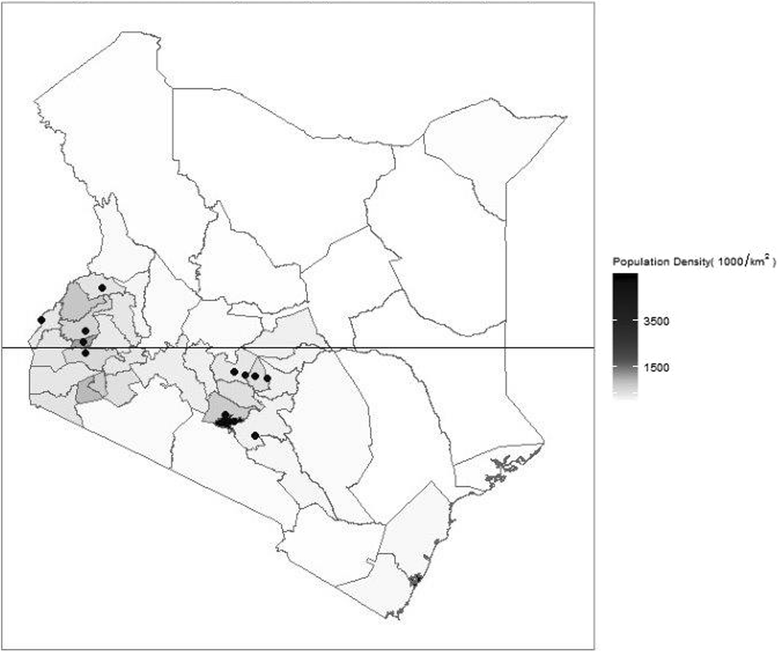Variation in and risk factors for paediatric inpatient all-cause mortality in a low income setting: data from an emerging clinical information network
- PMID: 28381208
- PMCID: PMC5382487
- DOI: 10.1186/s12887-017-0850-8
Variation in and risk factors for paediatric inpatient all-cause mortality in a low income setting: data from an emerging clinical information network
Abstract
Background: Hospital mortality data can inform planning for health interventions and may help optimize resource allocation if they are reliable and appropriately interpreted. However such data are often not available in low income countries including Kenya.
Methods: Data from the Clinical Information Network covering 12 county hospitals' paediatric admissions aged 2-59 months for the periods September 2013 to March 2015 were used to describe mortality across differing contexts and to explore whether simple clinical characteristics used to classify severity of illness in common treatment guidelines are consistently associated with inpatient mortality. Regression models accounting for hospital identity and malaria prevalence (low or high) were used. Multiple imputation for missing data was based on a missing at random assumption with sensitivity analyses based on pattern mixture missing not at random assumptions.
Results: The overall cluster adjusted crude mortality rate across hospitals was 6 · 2% with an almost 5 fold variation across sites (95% CI 4 · 9 to 7 · 8; range 2 · 1% - 11 · 0%). Hospital identity was significantly associated with mortality. Clinical features included in guidelines for common diseases to assess severity of illness were consistently associated with mortality in multivariable analyses (AROC =0 · 86).
Conclusion: All-cause mortality is highly variable across hospitals and associated with clinical risk factors identified in disease specific guidelines. A panel of these clinical features may provide a basic common data framework as part of improved health information systems to support evaluations of quality and outcomes of care at scale and inform health system strengthening efforts.
Keywords: Clinical risk factors; Hospital; Mortality; Paediatrics; Quality of care; Variability.
Figures



References
-
- Faculty of Public Health . Hospital mortality rates. 2014.
Publication types
MeSH terms
Grants and funding
LinkOut - more resources
Full Text Sources
Other Literature Sources
Medical

